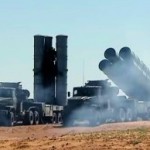 Russia’s selling the S-300 air defense missile system to Iran is bad. The mobile S-300 could dramatically complicate the air space picture for strike planners, with the missile launchers moving around to evade reconnaissance.
Russia’s selling the S-300 air defense missile system to Iran is bad. The mobile S-300 could dramatically complicate the air space picture for strike planners, with the missile launchers moving around to evade reconnaissance.
Iran could also lose a launcher and quickly deploy another one to fill the gap. It has nothing approaching this capability today.
The S-300’s range and mobility will make an attacking force work much harder, and probably take more losses, to fight through to its targets.
No defensive system makes an attack impossible, but the S-300 makes an attack cost more.
Defeating the S-300, in order to give a meaningful thump to the Iranian nuclear program, would not require a conventional ground invasion. But it would require considerably more tactical air forces than the U.S. has in a ready status today.
Israel will have to get creative. The S-300 poses a significant problem. Israel actually has more strike-fighters combat ready and available for an Iran attack today than the U.S. does.
But there’s no option of flying into an S-300 network once it goes active. It must be degraded – blinded, immobilized to some level – before the first main-target attack aircraft shows up.
The S-300 forces a decision on the Israelis about what their threshold is: at what point do they decide they can’t do enough damage after the S-300 is deployed, and must strike before it’s deployed.
There is a force sufficient to punch holes in the S-300 and do meaningful, extensive, cost-effective damage to Iran’s nuclear program – the combined attack assets of the U.S. and Israel. Read more here.
{Matzav.com Newscenter}











